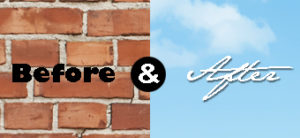“That’s sooooo been done.”
Maybe not.
Just because an idea seems familiar doesn’t mean it’s been done before.
In a book about The Beatles top 100 songs, two of the top 10, Yesterday (#4) and Something (#6) were considered very familiar by the Fab Two who wrote them; Paul McCartney and George Harrison, respectively. So familiar, that each song writer didn’t even bother to play the song for their fellow band mates initially, thinking the melodies must already have been done.
This happens to people in business quite often. They come up with an idea, it seems familiar, or just obvious and they figure, it must already exist, so they move on,
Maybe these ideas are so right on, so packed with relevance that it seems impossible that someone else didn’t already have them. In The Beatles examples, both Yesterday and Something were indeed broadly relevant, as both songs went on to become the two most covered songs from the entire Beatles repertoire, Yesterday the most covered song of all time, period.
So when you have an idea that feels like it might already exist, but you’re not sure, don’t be so quick to dismiss it. Explore the appropriate landscape to see if it actually might be an “obvious” idea that everyone else just overlooked. Recognize that the very fact that the idea seems familiar might be the reason it could be so successful. But don’t keep it to yourself. The risk of having someone else in your inner circle confirm that it’s been done is far outweighed by the potential upside if it is original. It’s only an idea initially. Put it out there in conceptual form. It could become a huge hit in the marketplace.
Note: For people who find the creative development process interesting, the above book “The Beatles 100 greatest songs,” published by Rolling Stone has a wealth of inspiration – real world inspiration, not theory. If you’re a popular music fan you might just be blown away to understand some of the method behind these creative geniuses madness.
© 2013 Tom Monahan
Tom Monahan is Head Creative Thinking Coach at Before & After Inc., a company specializing in training business people to think more creatively and facilitating brainstorming sessions. B&A works with major marketers and ad agencies worldwide, including Target, Virgin Atlantic, Budweiser and Unilever, among others. Previously Tom was a founder and ECD at Leonard/Monahan, a major incubator for advertising creative talent. Tom has published The Do-it-yourself Lobotomy for John Wiley & Sons, under the Adweek imprint, he was advertising columnist for Communication Arts for over a decade and was written up in The Wall Street Journal’s long-running “creative leaders” series.


